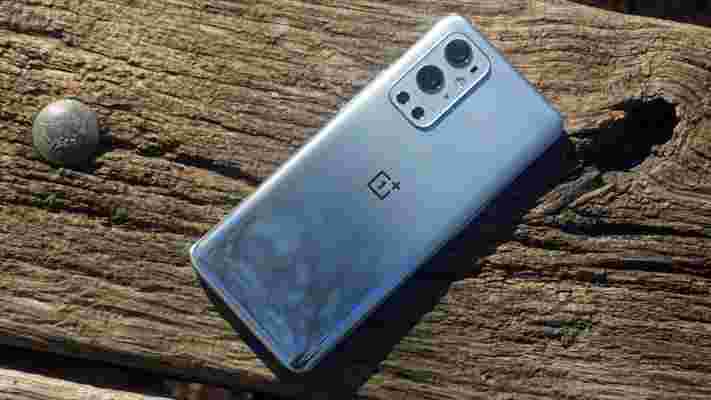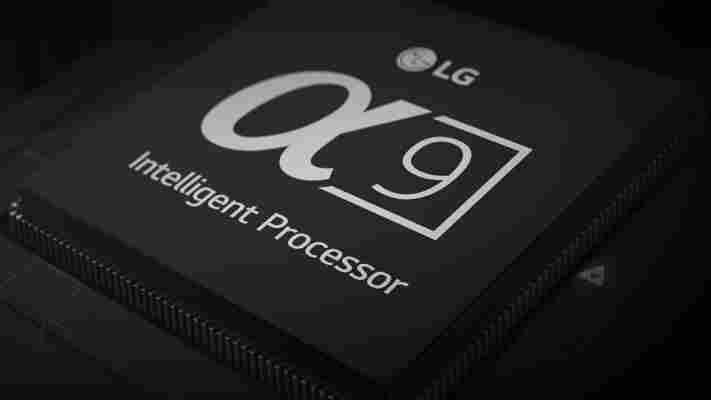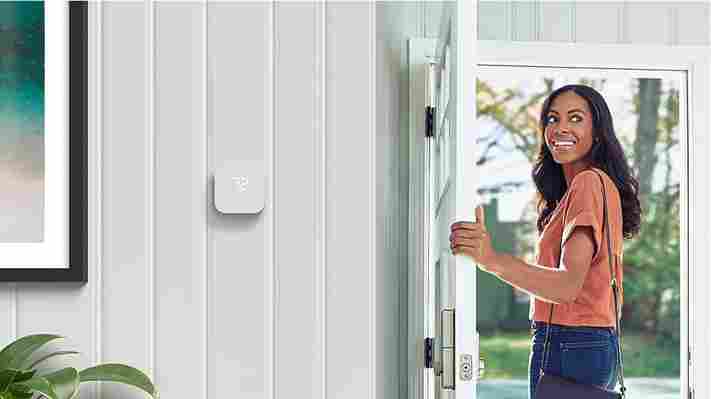OnePlus 10 Pro vs OnePlus 9 Pro: how big is the generation gap?
The OnePlus 10 Pro has been announced, with global availability set for sometime in March. After last year’s OnePlus 9 Pro wowed us as much as it did, we’re pretty stoked to see it.
So how are the two flagship generations likely to differ? Where has OnePlus been able to make improvements?
While we haven’t had a chance to go hands-on with the OnePlus 10 Pro just yet, we do have a comprehensive list of specs and a smattering of official product shots to reference.
Here’s how we’re seeing the OnePlus succession process right now.
OnePlus 10 Pro vs OnePlus 9 Pro: price and availability
The OnePlus 10 Pro was announced in its native China on Jan. 11, 2022. We haven’t heard anything about a global rollout as yet, but you can be sure it’s coming before too long.
Prices from 4,699 Chinese Yuan in China for 8GB of RAM and 128GB of internal storage, which works out to around $740/£550/AU$1,056. Alternatively, you can stump up 4,999 Chinese Yuan ($786/£586/AU$1,123) for 8GB/256GB, or 5,299 Chinese Yuan ($833/£621/AU$1,191) for 12GB of RAM and 256GB.
Rewind a little under a year, and the OnePlus 9 Pro hit shops on March 30, 2021. Prices started from $969/£829 for 8GB of RAM/128GB of storage, then moved up to $1,069/£929 for 12GB/256GB.

OnePlus 10 Pro vs OnePlus 9 Pro: design
OnePlus doesn’t appear to have totally ripped up its curvy design playbook for the OnePlus 10 Pro, but it has made some welcome enhancements.
The main change seems to be to the camera module. The OnePlus 10 Pro’s square camera module now emerges from the side of the frame in a pleasing fashion. By comparison, the OnePlus 9 Pro’s module seems rather dull and by the book.
Otherwise, we’re looking at two fairly similar phones, with gently curved edges and that signature central OnePlus logo around back.
They’re almost identically proportioned, with the OnePlus 10 Pro measuring 163 x 73.9 x 8.6mm and the OnePlus 9 Pro measuring 163.2 x 73.6 x 8.7mm. The OnePlus 10 Pro is just a few grams heavier at 200.5g, compared to the OnePlus 9 Pro’s 197g. That difference can probably be attributed to the newer phone’s larger battery.

They certainly seem to be made of similar stuff, with aluminum frames and glass to the front and rear. With the OnePlus 10 Pro, the display is covered by Gorilla Glass Victus, which is tougher than the OnePlus 9 Pro’s Gorilla Glass 5.
Both have an IP68 rating though, so they can stand up to the same degree of water and dust ingress.
Another shared point is that distinctive OnePlus alert slider, which lets you flit between silent, vibrate, and loud in an instant.
OnePlus 10 Pro vs OnePlus 9 Pro: display
There’s little difference between the displays of these two phones, at least on paper. Both are 6.7-inch AMOLEDs with QHD+ resolutions and 120Hz refresh rates.
While the OnePlus 10 Pro display is seemingly a newer form of LTPO that can scale right down to 1Hz, it’s worth recalling that the OnePlus 9 Pro’s screen could also achieve this feat through a sprinkling of custom magic.
It’s a dead tie on maximum brightness front too, with both phones able to hit an impressive (if far from class-leading) 1,300 nits.
We’ll need to try the OnePlus 10 Pro out before we can come to a conclusion, but an initial scan of these specs suggests that they’re similar displays. That’s not necessarily a bad thing though, as the OnePlus 9 Pro had a superb screen.

OnePlus 10 Pro vs OnePlus 9 Pro: cameras
Just as with the displays, we’re not seeing many signs of progress with the OnePlus 10 Pro’s camera setup.
Both phones give you a 48 MP f/1.8 wide sensor, an 8MP sensor capable of 3.3x optically zoomed shots, and a 50MP ultra-wide. From initial reports, the former two sensors are exactly the same on both devices.
It seems as if the main hardware difference here lies with the ultra-wide sensor, which has a new wider 150-degree angle in the OnePlus 10 Pro. Hopefully OnePlus hasn’t spoiled the fact that the OnePlus 9 Pro ultra-wide was so balanced and free of distortions.
Both phones make use of Hasselblad color tuning, though presumably the OnePlus 10 Pro takes things further. We’ll have to wait and see on that front.
The biggest advancements here will likely come down to the newer, faster processor used in the OnePlus 10 Pro, as well as any improvements made to the image processing algorithms by OnePlus and Hasselblad.
On paper, though, there’s disappointingly little between these two camera systems.
OnePlus 10 Pro vs OnePlus 9 Pro: specs and performance
There’s been a straightforward generational advancement between the OnePlus 9 Pro and the OnePlus 10 Pro when it comes to performance. While the OnePlus 9 Pro used the Snapdragon 888 chip, the OnePlus 10 Pro uses its successor, the Snapdragon 8 Gen 1.
It’s been suggested that this represents a 20% increase in performance for the newer phone, though initial reports suggest that the CPU gap might not be quite that pronounced. We’ll know for sure once we’re able to go hands-on and benchmark the OnePlus 10 Pro.
Not that this is a massive deal. The OnePlus 9 Pro – and indeed the entire class of 2021 flagships – still feels fast and fluid. We’re expecting the OnePlus 10 Pro to feel much the same.
OnePlus has equipped both of its phones with 8GB of RAM, and there are 12GB upgrade options in both cases. In a similar way, both phones give you 128GB and 256GB storage options.
Strangely enough, one of the biggest differences could be the software that the OnePlus 10 Pro launches with. The OnePlus 9 Pro was one of the last phones to launch with the company’s pure OxygenOS UI. Since then, OnePlus has merged with Oppo, and new OnePlus phones are based on the latter’s ColorOS.
We’re still expecting OxygenOS to provide a stylish software interface with the OnePlus 10 Pro, but this will be layered over the basic structure of ColorOS. The initial Chinese model doesn’t even bother with the custom UI part of the equation.
It’s a little sad seeing the effective end of what was one of our favorite Android UIs, but hopefully Oppo and OnePlus can preserve what we loved about it while adding an extra smack of personalization potential.
OnePlus 10 Pro vs OnePlus 9 Pro: battery
Perhaps the most consequential hardware improvement made in the OnePlus 10 Pro is the provision of a larger 5,000mAh battery. The OnePlus 9 Pro only had a 4,500mAh cell.
While that could still “reliably see you through a full day on a full charge with typical use,” according to our review, there was definitely room for improvement.
OnePlus also stepped things up in the recharging stakes, even though this was arguably one area that didn’t need addressing. The OnePlus 9 Pro packed in a speedy 65W charger, but the OnePlus 10 Pro manages to squeeze in an 80W charger.
We love OnePlus for continuing to supply said speedy charging bricks in the box, unlike Samsung and Apple. Long may that continue.
Both phones support 50W wireless charging via a special charging stand.
Takeaway
It’s early, but the OnePlus 10 Pro doesn’t appear to be a huge step forward from the OnePlus 9 Pro. The display, design, and camera all seem to be quite similar.
There have been advances here and there, such as a larger battery and faster charging, while we quite like what OnePlus has done with the new phone’s distinctive camera module.
But early signs are this is a safe half-step forward rather than a full generational leap from OnePlus. Given that the OnePlus 9 Pro was one of our favorite phones of 2021, that may not even be such a bad thing for many.
We’ll know for sure either way once the OnePlus 10 Pro model lands in our hands. Stay tuned.
This new TV setting could save Peter Jackson's original vision of The Hobbit
It can feel at times like TV makers run out of advancements to make on televisions. They’ve made them brighter with the advancement of backlight technology, more colorful with the integration of quantum dot films, and crisper with the advent of 4K and 8K resolution . But one area has made only incremental progress this whole time - and that’s motion.
The way you view your favorite films and TV shows at home probably isn’t the way they were intended to be watched. Processors, the brains behind the TV, have the unenviable job of translating the data coming in to fill your screen, and that includes converting 24 frame-per-second films into either 60Hz or 120Hz refresh rates. The means by which it does that is called motion processing, and some TVs do it better than others.
One of the more famous examples of motion done both right and wrong was Peter Jackson’s The Hobbit franchise shot at 48 frames-per-second (known widely as High Frame Rate or HFR ). It made action shots clearer, certainly, but gave the rest of the film a strange, almost soap opera-like appearance.
What The Hobbit needed was some shots mastered in HFR and others not.
What if that were possible for films? That some scenes got a ‘motion grade’ similar to how video editors match color grades and audio mixers do a sound mix? And, then, when that content comes to TVs we didn’t need the processor to handle motion processing?
It turns out there’s a way for content to be mastered, delivered and displayed in a way that circumvents interpolation. That’s the idea behind TrueCut Motion, a new format that will soon be available on some TCL TVs .
TechRadar spoke to Richard Miller (EVP of Technology) and Miguel Casillas (Senior Director of Ecosystem Marketing) who work at Pixelworks, the company behind TrueCut Motion, who explained how this technology could revolutionize motion processing and how it can be used to fix films.
How does motion processing work and how can it be fixed?
The content that you see on your TV can actually be broken down into a series of individual static images - what we call frames. When an object in one frame is in a different location in the next frame, we have motion.
Motion smoothing builds an entirely new frame in between the two existing frames that acts as a bridge to connect them. And for some folks, that artificial smoothing over - despite its good intention - looks incredibly unnatural to the eyes.
It’s become such a problem that Tom Cruise famously advocated for everyone to simply turn it off while watching Mission: Impossible - Fallout.
To fix it, most folks simply disable motion smoothing entirely - but that doesn’t fix the problem; 24 frame-per-second video still needs to line up with the 60 or 120Hz refresh rates of modern TVs.
If this sounds like a complicated problem, you’re not wrong. In fact, it’s taken Pixelworks some 15 years with 20 to 30 engineers working on it full-time to crack the code of how to get realistic motion from the editing booth to your TV… well, smoothly.
Start at the source and work your way up the chain
While the two technologies are very different in what they attempt to do, it can be helpful to think about TrueCut Motion the same way you think about Dolby Vision - a standard that requires a complete pipeline in order to get to your screen. That starts with the final cut of a film or TV show that’s being produced in Hollywood or in other studios around the world.
“The process is not simple, but it is streamlined,” Miller told us when asked how the process might integrate with existing content production schedules. “It can be done quite quickly, often in just a few days.”
According to Miller, six full-length titles have received the TrueCut Motion verification so far, though all of them were released in the Chinese market.
Pixelworks has had a number of interesting partnerships along the way, however. Miller says the company worked with Sony on Men In Black: International, as one of many examples.
Taking a film scene by scene to make motion smoother at the source is the key to how Pixelworks can deliver TrueCut Motion - and according to its developers, it’s the next logical step in the production process: “If you’re willing to do a color grade and a sound mix, the next logical step is a motion grade,” Casillas says.
The problem? Distribution and displaying a better version
Pixelworks had its first big success with TrueCut Motion at CES 2022 in January, when it was able to announce that TCL, one of the largest TV makers in the world, would integrate the technology into its screens.
In a demo with TechRadar, we had the chance to see the technology in action, albeit on a standard SDR monitor that hasn’t been TrueCut Motion-certified. There was a difference between motion that had been mastered in the format and hadn’t been in our demo - but the effects weren’t as pronounced as they might have been on certified equipment.
And that’s part of the problem here. As of right now there’s only one TV manufacturer on board, and there’s currently no streaming service willing to carry the service.
Miller says that’s in the works, but right now the company is focused on theatrical releases. According to him, we’ll see a few made with TrueCut Motion later this year with streaming titles to follow down the road.
It’d also be nice to see the technology supported by more manufacturers outside of TCL - another area that Miller feels confident about: “There’s no additional hardware needed on the TV … We’re hopeful this will be quite ubiquitous.”
How much the general public knows and cares about the technology will depend on their ability to market TrueCut Motion to studios, streaming services, and TV makers. Without all those ducks in a row, the service might be DOA, following in the footsteps of formats like Technicolor HDR, HD-DVD and a half-dozen others in the last two decades.

A smoother tomorrow is coming, one way or another
Hopefully TrueCut Motion takes off; TV makers with less-than-desirable motion processing technology (Vizio, I’m looking in your direction…) desperately need a format for perfect motion processing.
When asked if TV processors would ever be able to make the calculations on the fly for frame-perfect motion, Miller said he thought it would one day be possible. But given the complexity of the calculations, it could be another decade until we get there. Not helping is that, as TVs get brighter, judder is greatly amplified - and so this is a problem TV makers will need to address sooner rather than later.
Still, Miller remains confident in the format. “Even if we had processors that could process motion better - what about creative intent?” By giving directors the ability to completely control the final product, Miller feels that TrueCut Motion is the best solution for the age-old problem - and the one with the most potential.
Casillas agrees: “This is one of the most significant upgrades to the streaming world in some time.” That’s a claim we look forward to testing for ourselves when the technology rolls out to the streaming world sometime in the next few years.
Until that arrives, your next Hobbit viewing party won't be fit for sharp Elven eyes.
Amazon Smart Thermostat vs Nest Learning Thermostat: which is best for your home?
Being able to control the heating and cooling of your home from your smartphone even when you're not around, is something that’s been possible for more than a decade. Smart Thermostats may be some of the more expensive smart home devices on the market, but as they enable you to save energy (and subsequently money) as well as making life easier, the investment is certainly worth it.
In that time, Google has established itself as the market leader, with the Nest Learning Thermostat . Now in its third generation, the Nest combines heating and cooling control with smart home integration and artificial intelligence designed to lower your home energy bills, but it doesn’t come cheap.
This is where Amazon comes in. Following the likes of Ecobee and Wyze, Amazon has launched an affordable smart thermostat to challenge Nest. Simply called the Amazon Smart Thermostat , this device is considerably cheaper than the Nest equivalent, priced at just $60 compared to $249. Despite this, it has Alexa integration and intelligence that automatically adjusts the heating and cooling of your home in a bid to save you money.
We pitted the two smart thermostats head-to-head, to find out how they differ and help you choose the right smart thermostat for your home.
Best Google Nest Learning Thermostat and Amazon Smart Thermostat deals
Read on to discover how these two smart thermostats compare – or, if you’ve already decided which of the two you wish to buy, check out the best prices for each right now:
Price
Although popular, Nest’s smart thermostats are among the most expensive on offer today. While the company’s newer but simpler (and less intelligent) thermostat is priced at between $100 and $130 depending on whether there’s a sale on, the Learning Thermostat is $249 (or $450 for two) .
Meanwhile, the Amazon Smart Thermostat is just $60 . That’s a huge difference whichever way you cut it, and means it shouldn’t be long until the device has paid for itself by lowering your home energy bills.
It is worth quickly noting that, while the Nest is available internationally, the Amazon thermostat is currently (as of February 2022) only available in the US. Amazon tends to make smart home products more widely available if they are a proven success in its native market first, as was the case with the first Echo smart speakers.
As for installation costs, both thermostats can be installed by a competent DIYer. However, the wiring of your home will dictate whether a C-wire, which gives the thermostat its own power supply, is needed. If required, this will mean extra work and potentially the need to hire a professional to complete the installation.
Hiring a professional is likely to cost in the region of $100 , regardless of which smart thermostat you choose. Your local electrician might charge slightly less, while BestBuy’s The Geek Squad charges $130 to install any brand of smart thermostat, including smartphone setup.

Design
To our eyes, the Nest Learning Thermostat is the more attractive of the two, and has a more premium design thanks to its metal temperature adjustment ring and circular LED display. The Amazon Smart Thermostat is simpler, with a white plastic body that displays the temperature with white LEDs. Instead of a rotating dial, three touch-sensitive buttons are used to adjust the target temperature and access a simple menu system.
Inside, the Amazon device is closely related to the Honeywell Home T9 and T5 smart thermostats, as the retail giant partnered with Honeywell parent Resideo to create one of its own.
The simpler design of the Amazon means it doesn’t display as much information as the Nest Learning Thermostat, so for doing more than changing the temperature and switching between modes, you’ll have to open the Alexa smartphone app. By contrast, the more comprehensive menu system of the Nest lets you dig into settings and schedules by rotating and pressing the adjustment dial.
Lastly, the Amazon thermostat is only available in white, whereas the black Nest is offered with six different colors of metal ring. These are stainless steel, mirror black, brass, polished steel, white, black, and copper.

Features
At their simplest, both can act like normal thermostats, offering manual control of the heating and cooling of your home. But the key here is how they both use artificial intelligence to automatically adjust the temperature in a bid to lower your energy bills while keeping you comfortable.
Amazon and Nest both attempt to guess when the home is and isn’t occupied, using the location of your smartphone and the sensors of other smart home devices. For example, the Amazon thermostat is claimed to work more accurately if there are several Echo smart speakers and displays in your home. In that case, the Alexa Hunches system lowers the temperature when it thinks the house is empty.
The Amazon Smart Thermostat can be controlled manually by setting a schedule for it to follow, by using the Alexa smartphone app, or by speaking to the voice assistant. The thermostat doesn’t have a microphone or speaker of its own, but you can ask the Alexa of any nearby Echo speaker to adjust the temperature for you. Because the thermostat connects to your Wi-Fi network, it can be monitored and controlled while away from home too.
Similarly, the Nest Learning Thermostat doesn't have integrated voice control, but it can be interacted with by speaking to Google Assistant. Additionally, the Nest device also works with Alexa and other systems like IFTTT, Apple HomeKit and Samsung SmartThings. This cross-platform compatibility gives the Nest the upper hand, especially if you live in a home that isn’t run exclusively by Alexa.
The Amazon thermostat has built-in temperature and humidity sensors, and can access the temperature sensors fitted to some Echo smart speakers. But Amazon doesn’t sell dedicated sensors for relaying the temperature from other rooms, as Nest does.

Verdict
The Amazon Smart Thermostat has a surprisingly long feature set for such a low price. It is $190 cheaper than the Nest Learning Thermostat, yet joins it as being one of very few that are truly smart, using artificial intelligence and the sensors of other devices, plus the Alexa Hunches system, to automatically and efficiently heat and cool your home.
Both tap into smart home systems for voice control and remote app support, but the Amazon thermostat loses marks for only working with the company’s own Alexa platform. Those who have a varied smart home ecosystem will want to look elsewhere.
But, if you are happy to live inside Alexa’s walled garden, the price of the Amazon Smart Thermostat should be enough on its own to justify it over the Nest Learning Thermostat. If price isn’t a consideration, however, and you’d rather have the more stylish thermostat (or are fully subscribed to a Nest system and want to keep it that way) then the Leaning Thermostat is still the one for you.